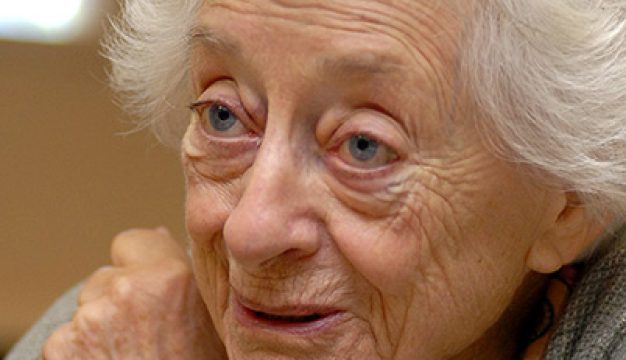John Franklin Hume
 John Franklin Hume
John Franklin Hume (1915-2004) was a longtime director of the Infantile Paralysis Center at Tuskegee Institute (present-day Tuskegee University) in Tuskegee, Macon County. In 1939, the newly established National Foundation for Infantile Paralysis (NFIP, now the March of Dimes) announced its first and only grant for a new facility to treat African American children. Located at the John A. Andrew Memorial Hospital (1892-1987), the Infantile Paralysis Center admitted its first patient in 1941 and was the only such center of its kind which provided care for African American children with polio until closing in 1975.
John Franklin Hume
John Franklin Hume (1915-2004) was a longtime director of the Infantile Paralysis Center at Tuskegee Institute (present-day Tuskegee University) in Tuskegee, Macon County. In 1939, the newly established National Foundation for Infantile Paralysis (NFIP, now the March of Dimes) announced its first and only grant for a new facility to treat African American children. Located at the John A. Andrew Memorial Hospital (1892-1987), the Infantile Paralysis Center admitted its first patient in 1941 and was the only such center of its kind which provided care for African American children with polio until closing in 1975.
Hume was born on April 11, 1915, in Brooklyn, New York, the second of three children born to Beatrice and Thaddeus Hume. After attending elementary and secondary schools in New York City, Hume graduated from City College of New York in 1936 with a bachelor's degree in physical education. In 1940, he graduated with his M.D. from Howard University College of Medicine in Washington, D.C.
Hume married Ruth Mae Westmoreland in 1942; they had three children. He interned at City Hospital in Cleveland, Ohio, one of the few institutions in the country that offered internships to Black medical students. This was followed by a general surgical residency under Charles Drew at Freedman's Hospital in Washington, D.C. Drew was famous for developing an early system for blood storage and preservation during World War II, out of which came the American Red Cross Blood Bank. He also was the first African American surgeon selected to serve as an examiner by the American Board of Surgery.
Hume left his residency program to serve in the U.S. Army during World War II and its aftermath, from 1942-46, as a surgeon with the 234th Quartermaster Battalion in Aversa, Italy, where his unit treated American personnel and Italian civilians. After completing his service, Hume returned to Freedman's Hospital to train in orthopedics under James Gladden, the first African American orthopedic surgeon certified by the American Board of Orthopedic Surgery. Hume completed his residency in 1949 and became only the second African American board-certified orthopedic surgeon in the country and the second African American member of the American Academy of Orthopedic Surgeons. That same year, Hume was recruited by the NFIP to work at Tuskegee Institute as temporary director of the institution's Infantile Paralysis Center. He agreed to the two-year stint and planned to open a practice in Philadelphia afterward, but instead he would remain in Alabama for the rest of his life.
The Infantile Paralysis Center at Tuskegee was the first in the United States to offer state-of-the-art treatment for African American victims of polio, who had no other treatment options in the South. Under director John Chenault, the facility was constructed and furnished with funding from the NFIP. In accordance with NFIP regulations, all medical directors of their sponsored polio treatment centers had to be board certified in orthopedics. Because Chenault had not completed his orthopedic specialty training, the NFIP suggested that Hume temporarily take his place until he did. When Chenault completed his training, he returned to his position as director.
After Chenault resumed his post as director, Hume returned to the Tuskegee Veterans Administration Medical Center (VA) as chief of orthopedic and surgical services, and, just as important, he helped to develop the Tuskegee Vocational Rehabilitation Center (TVRC). Started in 1950, the center was the culmination of cooperation between the Department of Vocational Rehabilitation of the State of Alabama, the VA hospital, and the Infantile Paralysis Center. The TVRC sought to help with employment opportunities for those with physical disabilities in Macon County. Hume likewise maintained an active private practice as an orthopedic surgeon. In 1955, Chenault decided to move his practice to Florida, so Hume took over as director of the Infantile Paralysis Center until 1975 when it closed. He then returned as chief of orthopedic and surgical services at the VA. Because veterans' services were segregated, he treated patients from all over the Southeast. He also conducted a bi-monthly Crippled Children's Clinic at the hospital.
Hume was concerned throughout his professional career with the lack of training opportunities for African Americans in the medical profession. Therefore, he spent much of his career teaching orthopedic residents and interns in the newly established general surgical residency program at the VA Medical Center. Also, from 1977-89, Hume was an adjunct professor of orthopedics for physical and occupational therapy students at Tuskegee's School of Allied Health, which he continued after his retirement from the VA in 1981.
In 1989, Hume co-authored with Edith Powell, a professor in the Allied Health program, A Black Oasis: Tuskegee Institute's Fight Against Infantile Paralysis, a historical account of the establishment and life of the Tuskegee Infantile Paralysis Center. Hume and Powell sought to highlight the service of highly trained African American professionals to African American children who could not get the same level of treatment anywhere else.
Hume remained active in local organizations until his death on September 29, 2004, at East Alabama Medical Center in Opelika, Lee County. Hume's wife of 62 years, Ruth Mae Westmoreland, had died the previous June.
Further Reading
- Chandler, Dana R., and Edith Powell. To Raise Up the Man Farthest Down: Tuskegee University's Advancements in Human Health, 1881-1987. Tuscaloosa Ala.: University of Alabama Press, 2018.
- Hume, John Franklin, and Mary Edith Powell. A Black Oasis: Tuskegee Institute's Fight Against Infantile Paralysis 1941-1975. Tuskegee, Ala.: Tuskegee University, n.d.



